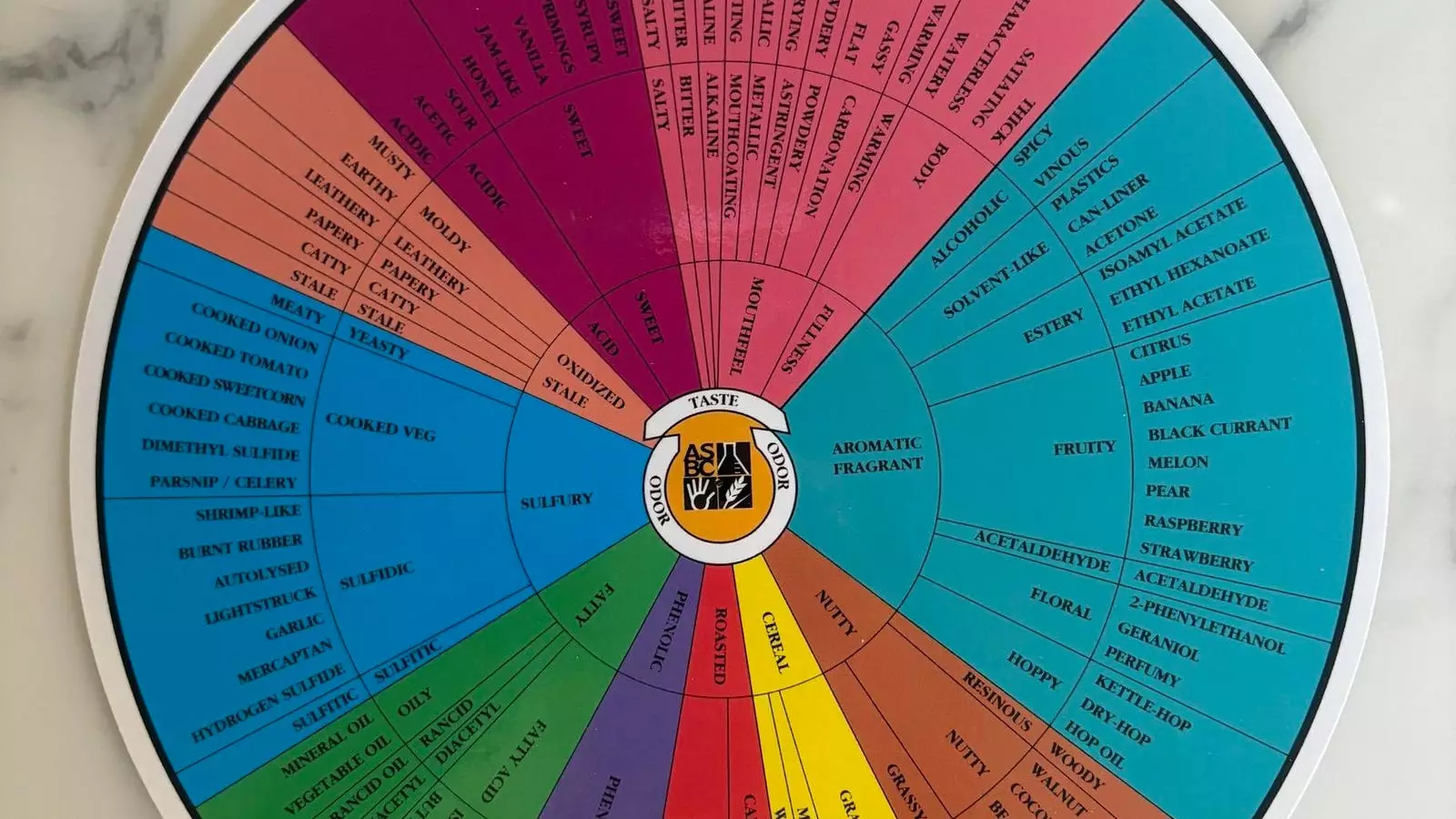In the world of beer, the importance of aroma can easily be overlooked by casual drinkers. However, Jen Blair, a prominent figure in the American beer landscape, is on a mission to change that perception. With her innovative webinar series, “Aroma: Explore The Wheel,” Blair is educating beer enthusiasts and industry professionals alike on the crucial role scent plays in the world of beer brewing and tasting. This initiative not only illuminates the complexities of beer aroma but also empowers participants to develop their sensory skills in an engaging and interactive manner.
At its core, “Aroma: Explore The Wheel” is grounded in the concept that aroma influences our experiences far beyond the realm of beer. Members of the series receive a selection of 6-10 unique aroma vials that serve as tools for blind smelling exercises. By focusing on scents and identifying them unassisted, participants learn to associate particular aromas with their respective flavors in beer. Unlike merely tasting a brew, this approach fosters a deeper understanding that begins with our sense of smell. Blair highlights that exploring these qualities can unravel one’s expectations, as the familiar scents of, say, tropical fruits, may evoke different memories and interpretations from person to person.
Aroma training is often shrouded in mystery, leaving many aspiring sensory analysts unsure of how to start or anxious about the learning curve involved. According to Blair, “Aroma: Explore The Wheel” fills a critical void by demystifying the process for participants of all experience levels. Rather than merely tasting, this initiative encourages individuals to dissect the array of stimuli present in their favorite beers. By doing so, they develop a richer vocabulary that describes the tasting experience, moving from vague terms like “fruity” toward more specific descriptors like “banana” or “navel orange.”
This sensory workout parallels physical training: just as one wouldn’t expect to achieve peak fitness after one gym session, the same applies to honing one’s palate. The recommendation is clear: consistency, mindfulness, and regular exposure to various flavors heighten one’s ability to discern and articulate differences in aroma.
Blair emphasizes that genetics certainly plays a part in taste and scent perception, but it is not the be-all and end-all that many believe. Instead, she argues, the development of a refined palate is attainable for anyone willing to put in the time. Participants are encouraged to embrace challenges, such as distinguishing between seemingly similar aromas in a blind tasting environment. This not only builds confidence but also provides insight into how individual perceptions can significantly differ from one another.
The series encourages the idea that gaining sensory skills is similar to acquiring any other craft; it requires patience and practice. With each prompt to evaluate the contents of their vials, participants cultivate a heightened awareness of the diverse elements that contribute to their favorite beers.
In her quest to further engage with the community, Blair has curated a robust reading list aimed at enhancing the understanding of flavor and aroma at home. Recommended literature includes, among others, “Flavorama” by Arielle Johnson and “How to Taste” by Mandy Naglich. These books act as useful guides not just for novice tasters, but also for seasoned drinkers eager to expand their horizons.
Apart from literature, Blair suggests that the most effective tools for sensory training might already lie within the walls of one’s home. The spice rack, pantry, and refrigerator contain a treasure trove of aromas waiting to be discovered. Simple comparisons between different spices can yield fruitful results in developing descriptor skills. One innovative example is when a friend of Blair’s set up a sensory panel with various types of peppercorns. This illustrates that sophisticated sensory training does not necessitate extravagant setups or expenses; rather, it can be as accessible as our everyday ingredients.
In closing, “Aroma: Explore The Wheel” stands as a testament to the belief that understanding aroma can elevate the beer tasting experience to new heights. Participants leave with a broadened perspective and a sense of accomplishment in having trained their olfactory senses. As we venture into the world of beer, whether sipping at a local pub or sampling at home, we should remember that the aromas we detect can lead to profound experiences and vivid memories. Blair’s initiative encourages all who are interested to embrace this aromatic adventure and discover the intricacies of flavor in a beer glass, one scent at a time.


Napsat komentář